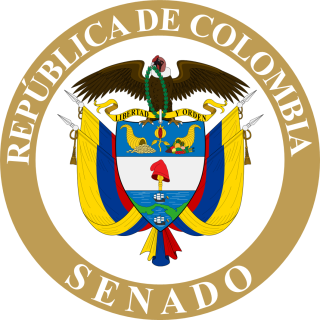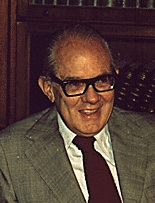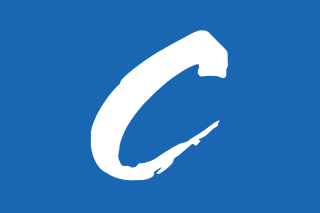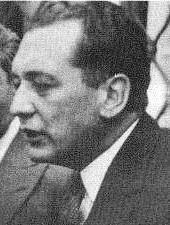 |
|---|
| This article is part of a series on the politics and government of Colombia |
Constitution |
Legislature |
Executive |
Related topics |
General elections were held in Colombia on 21 April 1974 to elect the President, the Senate and the Chamber of Representatives. [1] They were the first elections after the end of the National Front agreement, which had restricted electoral participation to the Conservative Party and the Liberal Party, with each party allocated 50% of the seats in both houses, [2] whilst the Presidency alternated between the two parties.

Colombia, officially the Republic of Colombia, is a sovereign state largely situated in the northwest of South America, with territories in Central America. Colombia shares a border to the northwest with Panama, to the east with Venezuela and Brazil and to the south with Ecuador and Peru. It shares its maritime limits with Costa Rica, Nicaragua, Honduras, Jamaica, Haiti, and the Dominican Republic. Colombia is a unitary, constitutional republic comprising thirty-two departments, with the capital in Bogota.

The President of Colombia, officially known as the President of the Republic of Colombia is the head of state and head of government of Colombia. The office of president was established upon the ratification of the Constitution of 1819, by the Congress of Angostura, convened in December 1819, when Colombia was the "Gran Colombia". The first president, General Simón Bolívar, took office in 1819. His position, initially self-proclaimed, was subsequently ratified by Congress.

The Senate of the Republic of Colombia is the upper house of the Congress of Colombia, with the lower house being the House of Representatives. The Senate has 108 members elected for concurrent (non-rotating) four-year terms.
Contents
- Background to the Election
- The National Front (1958–74)
- Electoral system
- Voting
- Candidate Qualifications
- General Political Considerations and Conduct of the Elections
- Presidential Candidates
- Liberal Party (Spanish: Partido Liberal Colombiano; PLC)
- Conservative Party (Spanish: Partido Conservedor Colombiano; PCC)
- National Popular Alliance (Spanish: Alianza Nacional Popular; ANAPO)
- National Opposition Union (Spanish: Unión Nacional de Oposición; UNO)
- Christian Democratic Party (Spanish: Partido democrático cristiano; PDC)
- Independent
- Results
- President
- Senate
- Chamber of Representatives
- References
Although the 1974 elections were crucial in that both parties fielded presidential candidates for the first time in over thirty years, only 45 percent of eligible voters voted. Scholars also attributed Colombia's traditionally high abstention rates to apathy, to non-compulsory voting, and to bureaucratic obstacles, such as inconvenient residency requirements. [3] In the presidential elections, all three main candidates were the son or daughter of previous presidents. Alfonso López Michelsen of the Liberal Party emerged as the winner with 56% of the vote. [4] The Liberal Party also won a majority of seats in Congress.

Alfonso López Michelsen is a Colombian politician and lawyer who served the 24th President of Colombia from 1974 to 1978. He was nicknamed "El Pollo", a popular Colombian idiom for people with precocious careers.















